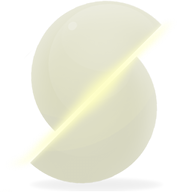#include <Print.hpp>
◆ _infill()
| void Slic3r::PrintObject::_infill |
( |
| ) |
|
◆ _make_perimeters()
| void Slic3r::PrintObject::_make_perimeters |
( |
| ) |
|
◆ _slice()
| void Slic3r::PrintObject::_slice |
( |
| ) |
|
◆ _slice_region()
| std::vector< ExPolygons > Slic3r::PrintObject::_slice_region |
( |
size_t |
region_id, |
|
|
std::vector< float > |
z, |
|
|
bool |
modifier |
|
) |
| |
◆ _support_material()
◆ _support_material_flow()
◆ add_copy()
| bool Slic3r::PrintObject::add_copy |
( |
const Pointf & |
point | ) |
|
◆ add_layer()
◆ add_region_volume()
| void Slic3r::PrintObject::add_region_volume |
( |
int |
region_id, |
|
|
int |
volume_id |
|
) |
| |
◆ add_support_layer()
◆ adjust_layer_height()
| coordf_t Slic3r::PrintObject::adjust_layer_height |
( |
coordf_t |
layer_height | ) |
const |
◆ bounding_box()
| BoundingBox Slic3r::PrintObject::bounding_box |
( |
| ) |
const |
◆ bridge_over_infill()
| void Slic3r::PrintObject::bridge_over_infill |
( |
| ) |
|
◆ clear_layers()
| void Slic3r::PrintObject::clear_layers |
( |
| ) |
|
◆ clear_support_layers()
| void Slic3r::PrintObject::clear_support_layers |
( |
| ) |
|
◆ clip_fill_surfaces()
| void Slic3r::PrintObject::clip_fill_surfaces |
( |
| ) |
|
Only active if config->infill_only_where_needed. This step trims the sparse infill, so it acts as an internal support. It maintains all other infill types intact. Here the internal surfaces and perimeters have to be supported by the sparse infill. FIXME The surfaces are supported by a sparse infill, but the sparse infill is only as large as the area to support. Likely the sparse infill will not be anchored correctly, so it will not work as intended. Also one wishes the perimeters to be supported by a full infill. Idempotence of this method is guaranteed by the fact that we don't remove things from fill_surfaces but we only turn them into VOID surfaces, thus preserving the boundaries.
◆ combine_infill()
| void Slic3r::PrintObject::combine_infill |
( |
| ) |
|
Combine fill surfaces across layers. Idempotence of this method is guaranteed by the fact that we don't remove things from fill_surfaces but we only turn them into VOID surfaces, thus preserving the boundaries.
◆ copies()
| Points Slic3r::PrintObject::copies |
( |
| ) |
const |
◆ delete_all_copies()
| bool Slic3r::PrintObject::delete_all_copies |
( |
| ) |
|
◆ delete_last_copy()
| bool Slic3r::PrintObject::delete_last_copy |
( |
| ) |
|
◆ delete_layer()
| void Slic3r::PrintObject::delete_layer |
( |
int |
idx | ) |
|
◆ delete_support_layer()
| void Slic3r::PrintObject::delete_support_layer |
( |
int |
idx | ) |
|
◆ detect_surfaces_type()
| void Slic3r::PrintObject::detect_surfaces_type |
( |
| ) |
|
◆ discover_horizontal_shells()
| void Slic3r::PrintObject::discover_horizontal_shells |
( |
| ) |
|
Find all horizontal shells in this object.
◆ extruders()
| std::set< size_t > Slic3r::PrintObject::extruders |
( |
| ) |
const |
◆ generate_object_layers()
| std::vector< coordf_t > Slic3r::PrintObject::generate_object_layers |
( |
coordf_t |
first_layer_height | ) |
|
◆ generate_support_material()
| void Slic3r::PrintObject::generate_support_material |
( |
| ) |
|
Initialize and generate support material.
◆ get_layer() [1/2]
| Layer* Slic3r::PrintObject::get_layer |
( |
int |
idx | ) |
|
|
inline |
◆ get_layer() [2/2]
| const Layer* Slic3r::PrintObject::get_layer |
( |
int |
idx | ) |
const |
|
inline |
◆ get_support_layer() [1/2]
| SupportLayer* Slic3r::PrintObject::get_support_layer |
( |
int |
idx | ) |
|
|
inline |
◆ get_support_layer() [2/2]
| const SupportLayer* Slic3r::PrintObject::get_support_layer |
( |
int |
idx | ) |
const |
|
inline |
◆ has_support_material()
| bool Slic3r::PrintObject::has_support_material |
( |
| ) |
const |
◆ infill()
| void Slic3r::PrintObject::infill |
( |
| ) |
|
◆ invalidate_all_steps()
| bool Slic3r::PrintObject::invalidate_all_steps |
( |
| ) |
|
◆ invalidate_state_by_config()
| bool Slic3r::PrintObject::invalidate_state_by_config |
( |
const PrintConfigBase & |
config | ) |
|
◆ invalidate_step()
◆ layer_count()
| size_t Slic3r::PrintObject::layer_count |
( |
| ) |
const |
◆ make_perimeters()
| void Slic3r::PrintObject::make_perimeters |
( |
| ) |
|
◆ model_object() [1/2]
◆ model_object() [2/2]
| const ModelObject& Slic3r::PrintObject::model_object |
( |
| ) |
const |
|
inline |
◆ prepare_infill()
| void Slic3r::PrintObject::prepare_infill |
( |
| ) |
|
Preparation step for generating infill.
◆ print()
| Print * Slic3r::PrintObject::print |
( |
| ) |
|
◆ process_external_surfaces()
| void Slic3r::PrintObject::process_external_surfaces |
( |
| ) |
|
◆ reload_model_instances()
| bool Slic3r::PrintObject::reload_model_instances |
( |
| ) |
|
◆ set_copies()
| bool Slic3r::PrintObject::set_copies |
( |
const Points & |
points | ) |
|
◆ slice()
| void Slic3r::PrintObject::slice |
( |
| ) |
|
Kick off the slice process for this object.
◆ support_layer_count()
| size_t Slic3r::PrintObject::support_layer_count |
( |
| ) |
const |
◆ support_material_extruders()
| std::set< size_t > Slic3r::PrintObject::support_material_extruders |
( |
| ) |
const |
◆ total_layer_count()
| size_t Slic3r::PrintObject::total_layer_count |
( |
| ) |
const |
◆ Print
◆ _copies_shift
| Point Slic3r::PrintObject::_copies_shift |
◆ _shifted_copies
| Points Slic3r::PrintObject::_shifted_copies |
◆ config
◆ layer_height_ranges
◆ layer_height_spline
◆ layers
◆ region_volumes
| std::map< size_t,std::vector<int> > Slic3r::PrintObject::region_volumes |
map of (vectors of volume ids), indexed by region_id (we use map instead of vector so that we don't have to worry about resizing it and the [] operator adds new items automagically)
◆ size
| Point3 Slic3r::PrintObject::size |
◆ state
◆ support_layers
◆ typed_slices
| bool Slic3r::PrintObject::typed_slices |
this is set to true when LayerRegion->slices is split in top/internal/bottom so that next call to make_perimeters() performs a union() before computing loops
The documentation for this class was generated from the following files:


 1.8.14
1.8.14